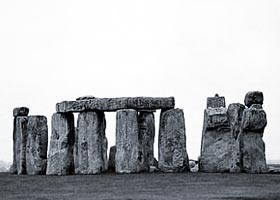 |
Causewayed Camps |
| Understanding the History of the word 'castle' "A safe retreat against intrusion or invasion" | |||
| Picture of Stonehenge |
| The English castle, as we generally recognise it, was built of stone during the Medieval era. But the story of the history of the castle goes back to the Neolithic Period - the Stone Age 3000 - 1800 BC! This page includes fascinating facts and information about the English Causewayed Camps |
The history of the castle therefore can date back to the time when people started to live in settled communities - the Stone Age! The Causewayed Camps fall into the castle definition of "A safe retreat against intrusion or invasion. Causewayed Camps of the Stone Age ( 3000 - 1800 BC )Causewayed Camps or Enclosures
The History of the Causewayed Camps, or Enclosures & the English Castle What was the purpose of Causewayed Camps, or Enclosures? |
Description of Causewayed Camps, or Enclosures What was a Causewayed Ditch Ring? Evidence of English Causewayed Camps Why were Causewayed Camps so important to English castle history? |
Causewayed Camps | |||
History of the English CastleThe History of the English Castle
|
| © March 2018 SiteSeen Ltd. | Cookies Policy | Privacy Statement | By Linda Alchin | ||
